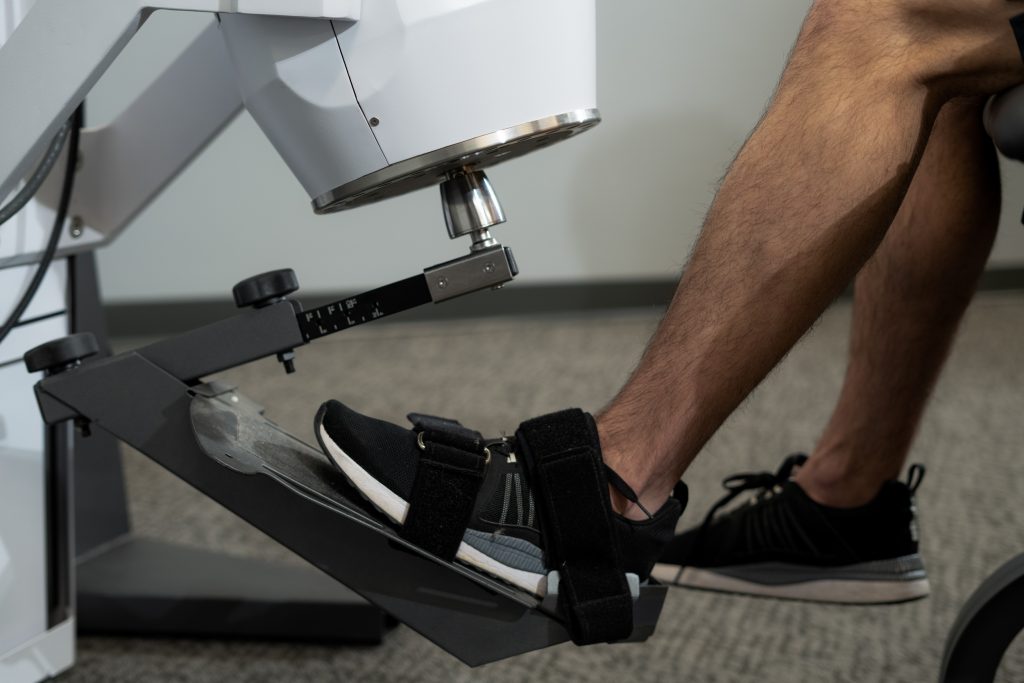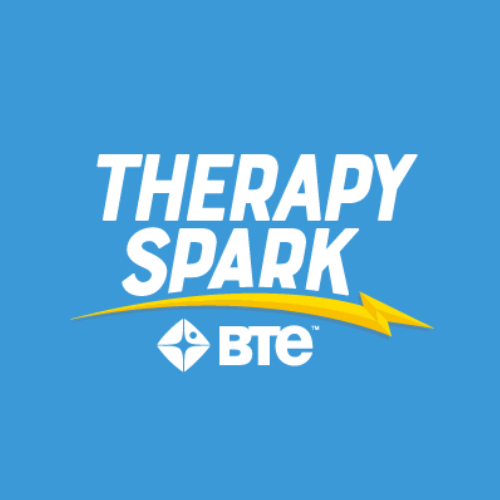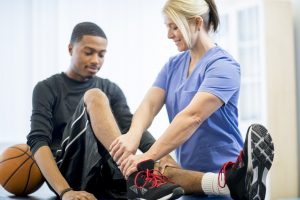
Effective Soccer Rehab Exercises and Recovery Tools for a Safe Return to the Field
Treatment GuidelinesAccelerate your recovery with soccer rehab exercises and advanced rehabilitation tools designed to build strength, restore mobility, and prevent re-injury.
It’s no surprise that soccer puts incredible demands on the body. Those quick sprints, sharp cuts or change of direction, and physical battles on the field make injuries almost inevitable, even for the most careful players. When knees, ankles, and hamstrings are impacted, the road to recovery needs to be smart and structured.
For physical therapists and clinicians working with injured soccer players, you need more than just standard protocols. You need tools that understand the unique movements of the game. That’s where systems like the PrimusRS and Eccentron shine, giving you hard data to back up your expertise and real-time feedback during those crucial recovery phases.
And for athletes sidelined by soccer injuries, we get it. You want back on the field yesterday. The right soccer rehab exercises aren’t just about healing; they’re your pathway back to the game you love. With the right provider using evidence-based approaches and modern recovery tech, you can turn recovery time into preparation for your comeback. The journey might be challenging, but with the right guidance and tools, you’ll be back scoring goals before you know it.
Common Soccer Injuries and Their Rehabilitation Needs
Let’s talk about soccer injuries. They happen to the best players, but the right approach makes all the difference in recovery.
For providers: When you’re working with injured soccer players, you’ll see these common patterns regularly. The key is connecting your assessment findings to sport-specific rehab that mimics what they’ll face back on the field. Your expertise with these particular injuries can dramatically speed up their safe return to play.
For athletes: Understanding what’s actually happening with your injury helps you become an active partner in your recovery. Working with a therapist who knows soccer means you’re not just healing, you’re rebuilding the specific skills you need to play your best. Good sports physical therapy doesn’t just fix pain, it makes you stronger for when you return to the pitch.
Here are the injuries you’ll encounter most often:
ACL Tears
These soccer injuries occur when the anterior cruciate ligament, a strong band of tissue connecting the thighbone to the shinbone, is damaged. Many times, the injury is not a result of contact, but instead, a failure of the knee to sustain the force of changing direction.
ACL tears can account for a significant loss of playing time for a soccer player. The average time away from sport is one year, assuming there are no other injuries to the other parts of the knee. The rehabilitation process needs to be tailored to the athlete’s sport and address strength differences between the quads and hamstrings, as well as symmetry with the other leg. Giving attention to each phase of movement (concentric and eccentric) with more focus on eccentric will be a vital part of the rehabilitation program.
Ankle Sprains
An ankle sprain happens when something stretches or tears the ligaments that hold the ankle together. Due to the ankle’s anatomy, a “sprain” occurs when the ankle rolls. Inward rolls are the most common, where damage is done to the ligaments on the outside of the ankle.
It’s important to reduce swelling, restore range of motion, and improve strength. In addition, balance and high load concentric and eccentric movements for both ankles wil help restore function and confidence for a safe return to play.
Hamstring Strains
Hamstring injuries are one of the most common injuries in sports medicine. These injuries can sideline a soccer player for an average of 17 days, with a high risk of re-occurence within two weeks of returning to play.
Pulling a hamstring muscle requires following the RICE regimen (rest, ice, compression, elevation). Once the pain reduces, practicing range-of-motion exercises, followed by strength and eventually resistance exercises, will aid in the rehabilitation process.
One of the most effective recovery methods is eccentric exercises to strengthen the injured limb. Many hamstring injuries occur as a result of the eccentric phase of movement. Adding high volume, properly dosed eccentric exercise can effectively help an athlete return to pay with a lower risk of reinjury.
Integrating Advanced Technology: PrimusRS in Soccer Rehab
PrimusRS is an excellent tool for soccer rehab exercises because it simulates various soccer activities in a closed or open kinetic chain. These actions include kicking the ball, throw ins, balancing, lunging, and many others. The patient will have a safe environment to practice these movements, which will help them regain physical strength and control over their movements.
Providers will achieve better assessments and outcomes with PrimusRS, as it offers real-time data and precise progress tracking to ensure patients are where they need to be in their recovery journey. It provides customizable resistance and versatile activities to cater the exercises to each patient’s unique needs. You can see how it works in the video below.
Soccer Injury Recovery with Eccentron
The Eccentron is a lower extremity, eccentric only rehabilitation device. This closed kinetic chain device allows the patient to isolate only the eccentric phase of movement, with no concentric contractions. Because of this, it’s gentle enough for early stages of rehabilitation as well as a preseason or in-season strengthening program. The visual feedback teaches athletes how to control their eccentric force at varying speeds. Athletes can do a significant amount of work within each session, focusing on the glutes, hamstrings, quads, and calf muscles.
Phase-Based Soccer Injury Rehabilitation Approach
Soccer injury rehab generally follows these three phases: acute, subacute, and functional. Each stage has distinct goals for the patient to focus on, helping them recover and get back in the game.
Phase 1: Acute Phase
To start, patients will work on gentle range-of-motion activities and isometric contractions (contractions where the muscle doesn’t change its length). These can gradually improve mobility while reducing pain and inflammation, thereby protecting the injured area.
Phase 2: Subacute Phase
Next, patients should focus on resistance exercises and balance training. This will help them restore both strength and stability. PrimusRS can hep patients perform isolated resistance exercises that target the injured area. It can also provide resistance-based balance exercises.
Phase 3: Functional Phase
The final phase focuses on reintroducing sport-specific movements and enhancing neuromuscular control. To achieve this, patients will focus on in-depth rehabilitation exercises, including agility drills, plyometrics (jump training), and simulated soccer game scenarios. PrimusRS can simulate several sport-specific movements with gradual progression to help athletes return to play.
Essential Soccer Rehab Exercises
The following soccer injury prevention exercises are beneficial for physical therapy. Patients can use the PrimusRS to perform these exercises with controlled resistance and receive objective feedback, ensuring that the exercises meet each patient’s specific needs. Providers can examine the data collected to track the patient’s progress and determine the best next steps in their recovery.
Hamstring Strengthening
The Nordic hamstring curl is an excellent exercise for strengthening the hamstrings. Patients begin on their knees with their feet securely positioned. They lean their body forward until their hands touch the ground, and then they push themselves back up. Doing this enhances eccentric strength, which helps prevent future strains. With the PrimusRS, you can do seated, lying, or standing hamstring curls.
Ankle Stability
Patients can improve ankle stability by balancing on one leg at a time on unstable surfaces. Engaging in this activity for a few short sessions a day can enhance your proprioception (the body’s ability to sense its position and movements), thereby reducing the risk of ankle injuries. Clinicians can easily isolate ankle movements with the PrimusRS with plantarflexion, dorsiflexion, inversion, and eversion exercises.

Knee Strengthening
For patients recovering from knee injuries, step-downs and lateral lunges can help. Step-down exercises involve standing with one foot on a step and slowly lowering the other leg. Lateral lunges are a type of side lunge that stretches your inner thigh. Both exercises enhance patellar tracking (the movement of the kneecap) and reduce the risk of further ACL injuries. Clinicians use the PrimusRS to deliver flexion, extension, and comprehensive lower extremity exercises that support patient recovery.
Core Activation
Exercising core muscles enhances stability during frequent soccer movements, making players less likely to fall and injure themselves. Planks (holding a push-up position supported by your forearms) and rotational movements (such as turning the torso and hips) are beneficial for core activation. Physical therapists transform rehabilitation sessions using the PrimusRS to guide patients through challenging assisted planks, dynamic trunk rotations, and progressive stability exercises that build real-world strength.
Return-to-Play Criteria and Progress Monitoring
Functional rehab tools, such as PrimusRS, provide measurable outcomes to help clinicians determine when players are ready to return to playing soccer. Utilizing this advanced technology provides objective data to support your clinical decision-making and facilitate return-to-sport testing.
The PrimusRS’ reporting provides objective data after each exercise and session. With this data, clinicians can easily adapt the plan of care as the patient progresses. As they track progress, they can effectively determine when it is safe for the player to return to their normal activities.
Optimizing Recovery for Soccer Athletes
Whether you’re a physical therapist helping athletes get back in the game or a soccer player sidelined by injury, the path forward is clear: structured rehab plus smart technology equals faster recovery.
For providers, tools like the PrimusRS track progress with objective data so you can make confident decisions and tailor treatments that actually match what happens on the field. Your athletes will notice the difference when their exercises directly translate to game movements.
And if you’re recovering from a soccer injury, finding a clinic that combines hands-on expertise with technology like this can dramatically shorten your bench time. Don’t settle for generic rehab. Look for programs designed specifically for soccer players that understand the unique demands of your sport.






